Social media often shows us only the perfect, filtered version of online personalities. But InfluencersGoneWild (IGW) breaks these norms. This growing trend shows the raw, unplanned side of internet celebrities that fans rarely get to see.
The stark difference between carefully planned content and the spontaneous IGW videos has caught millions of viewers’ attention. People are drawn to this authenticity in a world full of staged photos.
In this article, we’ll show you 15 shocking IGW moments that changed how fans see their favorite online stars. We’ll explain why these clips went viral and what they tell us about social media culture today.
You won’t need to search through countless videos. We’ve found the most talked-about clips that show the true personalities behind the profiles you follow.
The Evolution of Content Creation on IGW
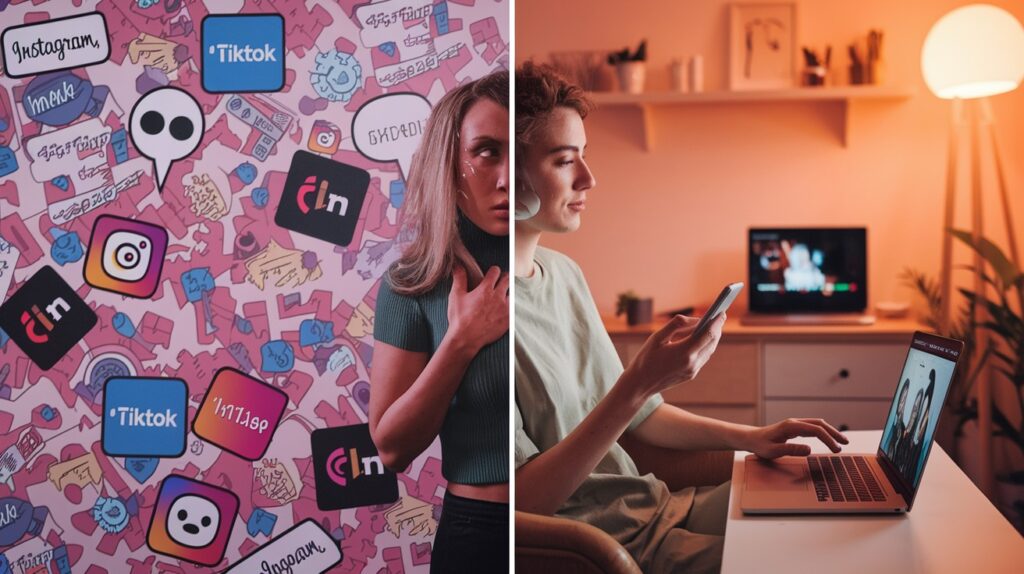
Creators and fans connect differently now. What started as viral clips has become a strategic business approach.
I’ve watched this change happen. You probably have too.
Before IGW, creators chased algorithms and platform rules. Now the power has shifted.
Influencers earn directly from fans who pay for authentic content. No middleman controls what they show.
Why drop the perfect act? Three reasons:
- Money – More earnings from loyal fans
- Freedom – Self-expression without restrictions
- Control – Full ownership of their content
Some creators tell me they feel trapped by their polished image. Going wild on IGW lets them breathe.
This shift means you see who these people are, not just the algorithm-friendly version.
The relationship feels more real. More honest.
And that changes everything about online fame today.
15 Most Impactful IGW Moments That Changed the Game
Raw Confessions
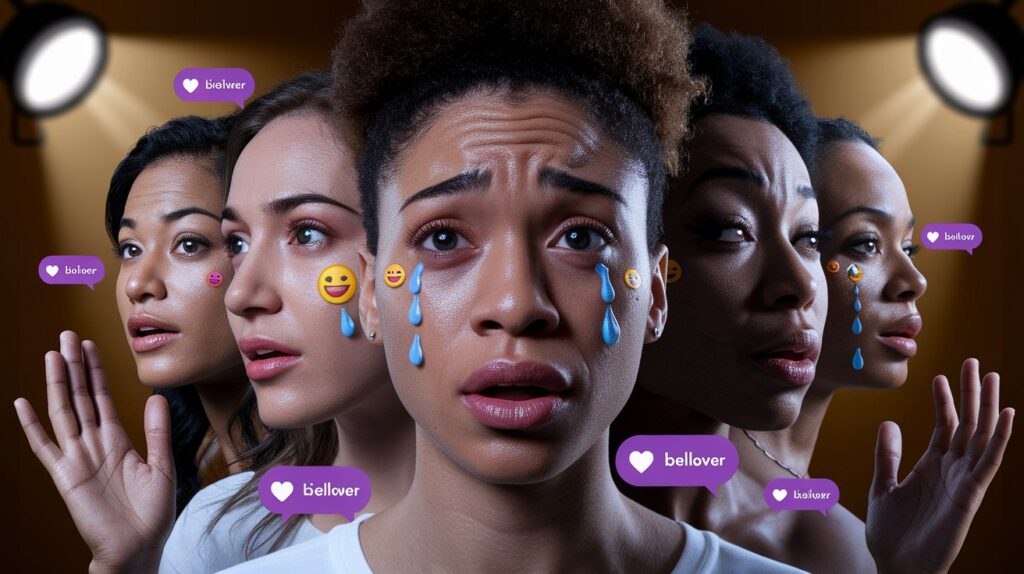
I remember when these moments first shocked the internet. You couldn’t open social media without seeing people talk about them.
The mask came off. That’s what made these confessions so powerful.
Top fashion influencers admitted they don’t own half the clothes they post. Travel stars revealed they visit locations for just 30 minutes to get the perfect shot.
What made these confessions different?
They weren’t planned PR moves. They happened in casual IGW streams when guards were down.
Some shared while tired late at night. Others spoke up after frustrating days. A few broke down in tears, showing emotions we never see on main feeds.
The most memorable confession came from a fitness influencer with 8 million followers. She showed her actual daily diet, nothing like what she promoted in sponsored posts.
The impact was immediate. Brands panicked. Fans felt both betrayed and relieved.
I think these moments created a new standard for truth online. You probably noticed how many other influencers started being more honest after these IGW confessions went viral.
This was just the start of how IGW changed social media forever.
Unscripted Reactions
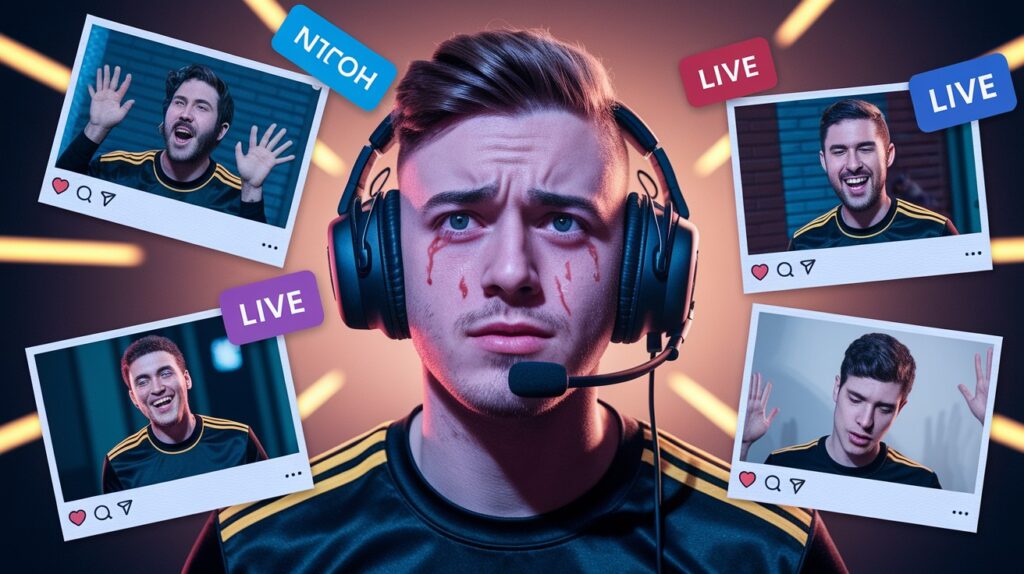
I still get goosebumps thinking about these moments. You know the ones-where influencers showed real feelings without planning them first.
These weren’t acted out. They weren’t edited. They just happened.
When that gaming influencer lost a championship match and cried on stream, millions watched. He didn’t turn off the camera. He let you see his disappointment.
This changed everything.
Before IGW, most content creators hid their true feelings. They showed only happiness, excitement, or fake shock.
The raw emotions we saw included:
- Pure joy – Like when that travel creator found out she was pregnant during a live stream
- Real fear – The fashion influencer’s reaction during the LA earthquake
- Deep grief – A beauty creator breaking down about her mom’s cancer diagnosis
Some critics called these moments too personal. Too much. But fans connected with them in ways that perfect posts never allowed.
I think what made these reactions matter was their timing. You were there with them as life happened.
The makeup artist who burst into tears getting her first big brand deal? That’s real. The food creator who screamed when she cut her finger during a cooking stream? That’s human.
These moments remind us that behind every perfect feed is a regular person with real feelings.
And you can’t fake that connection.
Behind-the-Scenes Access
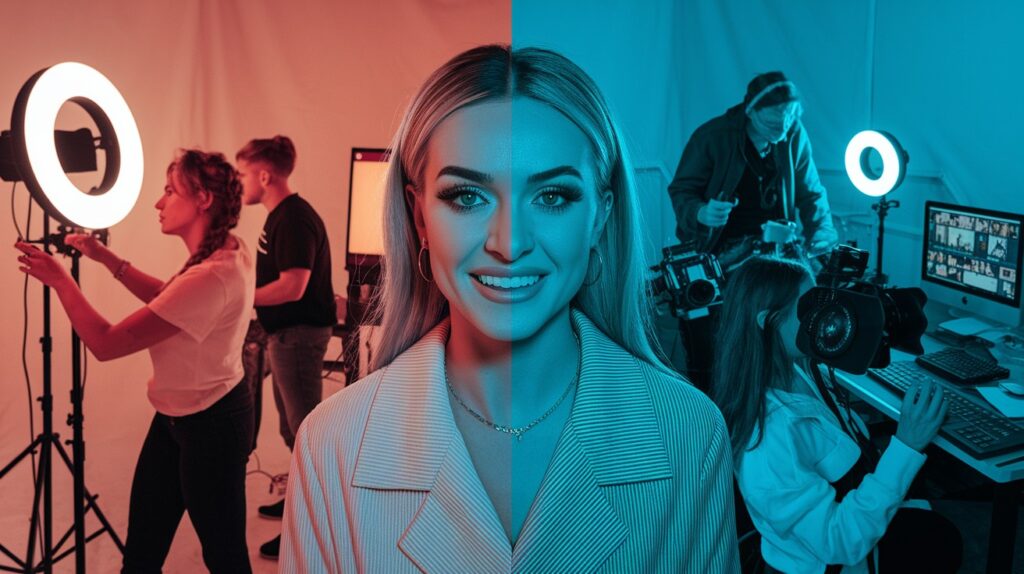
I used to think influencer life was all glamour. You might have thought the same.
Then IGW changed how we see things.
The reality shocked many fans. Those perfect photos? They often take hours and hundreds of attempts. That “simple” morning routine? It involves a team of people off-camera.
What IGW showed us was the true effort behind the ease.
Let me share what we learned.
The work behind content creation includes:
- Long hours – Many creators work 12-14-hour days
- Physical strain – Injuries from stunts and repetitive poses
- Mental pressure – Constant stress about views and comments
One fashion creator showed her apartment-nothing like her feed suggested. A tiny studio with clothes piled everywhere and lighting equipment taking up most of the space.
I found it fascinating when a food creator showed how many dishes get thrown away after filming. You see one perfect plate on Instagram, but IGW revealed the 15 failed attempts.
The contrast is striking.
Travel influencers revealed hotel rooms filled with equipment rather than luxury. Fitness stars showed their exhaustion between takes.
These glimpses make the whole industry more honest. They show the work that goes into making content seem effortless.
And strangely, seeing the mess makes me respect creators more, not less.
The truth connects in ways perfection never could.
Bold Statement Pieces
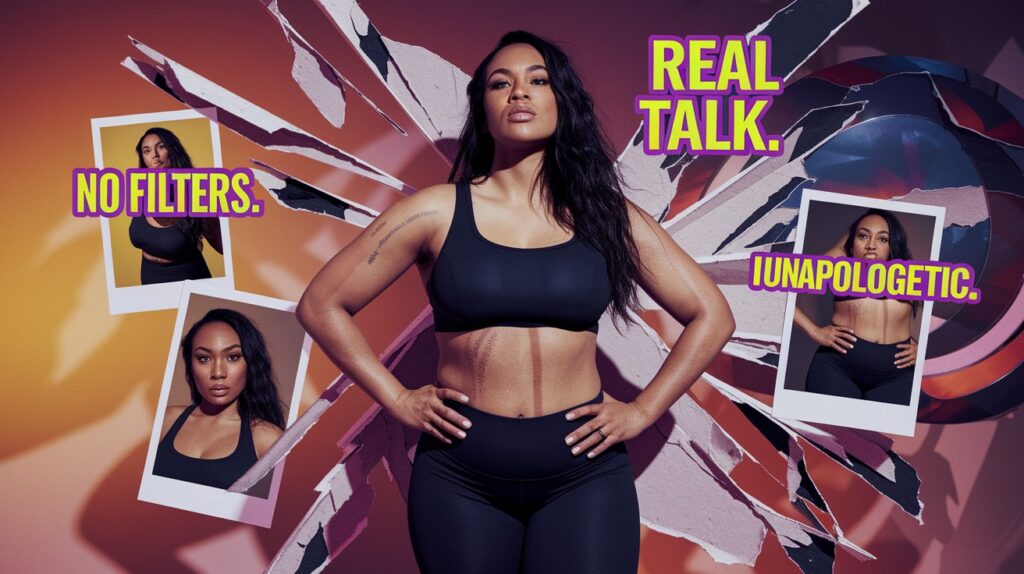
I’ve seen content that plays it safe. You have too. But IGW’s most powerful moments came when creators took risks and spoke up.
These weren’t just for shock value. They started important talks.
When that fashion influencer showed her actual body with stretch marks and scars, the internet paid attention. Her usual feed showed only perfect, edited images.
The contrast made people think.
Some creators used IGW to challenge norms by:
- Showing real bodies – No filters, no edits, just truth
- Discussing taboo topics – Mental health struggles, money problems, relationship issues
- Questioning industry practices – Exposing unfair brand deals and toxic work conditions
One beauty creator filmed herself removing all her makeup and extensions. She talked about feeling trapped by her online image. The video hit 12 million views in two days.
I remember when a male lifestyle influencer opened up about his eating disorder. You could see how hard it was for him to speak. His hands shook.
These moments matter.
A fitness creator showed her “before” photos were actually taken after her “after” photos-just with different posing and lighting. She explained how the industry tricks people.
Some lost followers. Others gained more dedicated fans. All of them changed the conversation.
What makes these bold statements powerful is the risk involved. These creators put their careers on the line to speak the truth.
And that’s rare in today’s careful online world.
Spontaneous Live Sessions

I think the most genuine IGW moments happen when creators go live without a plan. You can tell the difference immediately.
No script. No rehearsal. Just real talk.
Those late-night streams where creators chat while doing normal things hit differently. One gaming influencer started a casual stream while cleaning his apartment and ended up talking for four hours about his childhood.
People couldn’t stop watching.
What makes these spontaneous sessions special?
- Natural conversations – Topics flow based on real interest, not marketing
- Honest answers – No time to craft perfect responses
- Unexpected moments – From delivery people interrupting to pets doing funny things
A beauty creator’s power went out during a storm. Instead of ending the stream, she lit candles and kept talking. Fans said they felt like they were hanging out with a friend.
I noticed these unplanned streams show sides of creators we never see in regular content. You get to watch them think on their feet.
That’s when personality shines through.
Remember when that food creator’s mom called during a live? The whole conversation about family recipes wasn’t planned. It became one of his most popular videos ever.
Some creators start these sessions at odd hours when they can’t sleep. Others begin them spontaneously when something exciting happens.
The common thread is their authentic nature.
No editing. No filters. No perfect lighting.
Just real people sharing real moments-and that’s what makes IGW different from standard social media.
Personal Crisis Handling
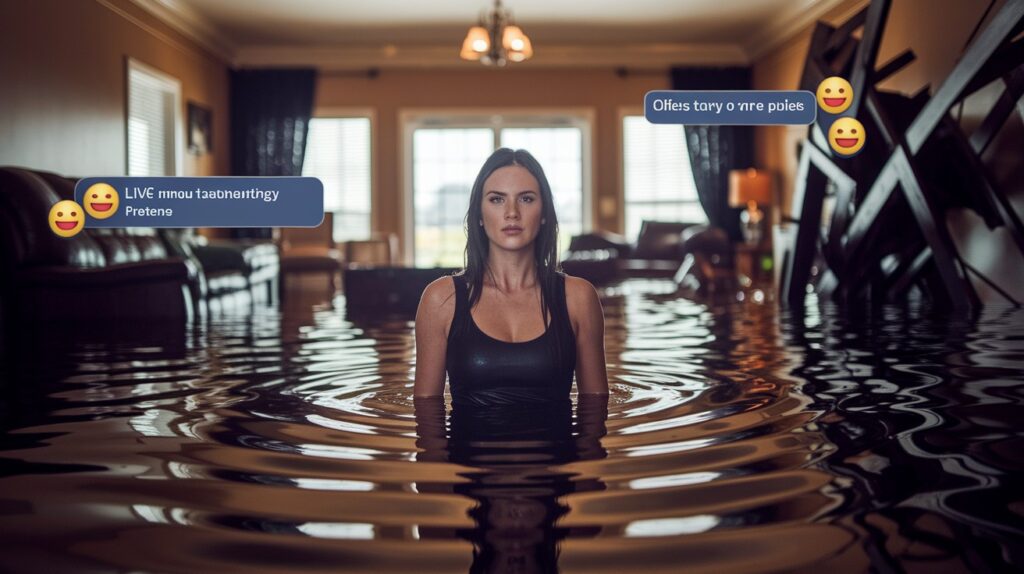
I’ve seen how crises play out on social media. You have too. Most influencers hide when things get tough.
But IGW changed this pattern.
Some creators chose to share their hardest moments in real time. Not for views or sympathy, but for honesty.
When that lifestyle influencer’s home flooded during a hurricane, she didn’t wait to post perfect “after” photos. She showed the water rising in her living room as it happened.
The raw footage told a story that polished content never could.
Creators shared various types of crises:
- Health scares – From sudden hospital visits to chronic illness flare-ups
- Financial troubles – Business failures and sponsor losses
- Personal losses – Breakups, deaths, and other painful life events
One beauty creator went live after finding out her product line was being dropped. You could see her process the news in real time-shock, anger, then determination.
I think these moments matter because they break the illusion of perfect lives. You get to see how people handle problems.
This is what builds trust.
A fitness influencer shared his recovery process after a serious injury that threatened his career. He showed the painful physical therapy sessions, the setbacks, and the small wins.
Some fans criticized these creators for “oversharing.” Others thanked them for making their struggles feel normal.
The most powerful crisis moments weren’t dramatic breakdowns. They were the quiet, determined efforts to keep going when things got hard.
That’s something staged content can never capture.
Industry Secret Revelations
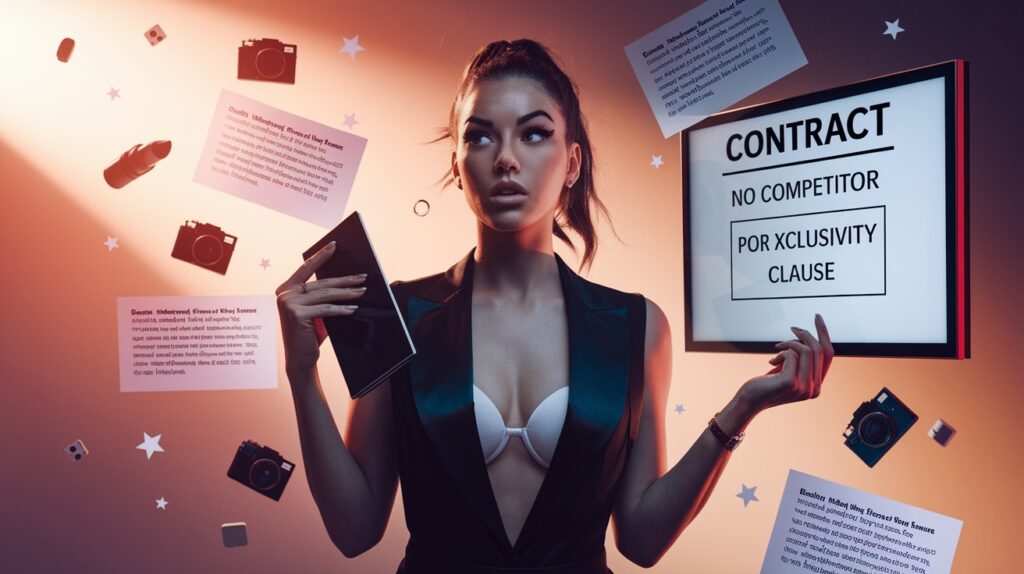
I never knew how the influencer world worked until IGW. You probably didn’t either.
The truth surprised everyone.
When creators started sharing what happens behind closed doors, it changed how we see social media forever.
That beauty influencer who showed her contract terms shocked the industry. She revealed brands often forbid creators from using competitor products for months-even in their personal lives.
This was just the beginning.
Major secrets revealed include:
- Payment gaps – How male creators often get paid 3-4 times more than women for identical work
- Fake metrics – Screenshots of bought followers and engagement pods
- Content ownership – How brands can own your face and words forever after campaigns
One travel creator showed emails from a hotel offering free stays, but only if she didn’t show any real guests or mention negative aspects.
I found it eye-opening when a fitness influencer shared how “before and after” photos are often taken on the same day. You probably noticed how he demonstrated the tricks: lighting, poses, pump, and dehydration.
The money talk changed everything.
Fashion creators revealed actual payment amounts instead of just saying “paid partnership.” This helped new creators stop working for free or for products.
Some lost brand deals after these revelations. Others gained respect and better contracts.
What makes these secrets powerful is how they help both creators and viewers. New influencers learn what to expect. Fans understand what’s real and what’s marketing.
The truth might not be pretty, but it’s important.
And IGW made it possible.
Controversial Topic Discussions

I’ve noticed how careful most creators are on regular platforms. You have too. They stick to safe topics that won’t upset anyone.
IGW broke this mold.
When creators speak freely about difficult subjects, they risk their careers. But some chose that risk for topics they care about.
A science creator explained climate change impacts without watering down the facts. Her main platforms had warned her to keep content “positive and brand-friendly.”
On IGW, she didn’t hold back.
Topics creators addressed include:
- Political issues – Voting rights, healthcare access, and economic policies
- Social justice – Addressing systems that hurt certain groups
- Industry problems – Poor working conditions and unfair practices
One lifestyle creator shared her experience with online hate and threats. She named specific platforms that ignored her reports and showed actual messages she received.
I think these discussions matter because they show the full person behind the content. You get to see what they truly care about-beyond products and trends.
This builds real communities.
A gaming creator lost major sponsors after discussing mental health struggles in his industry. He knew the risk but felt the topic was too important to ignore.
Some fans disagree with the creators’ views. Others find creators who match their values.
What makes these conversations powerful is how they happen. Not as planned PR statements, but as natural discussions where creators think out loud and sometimes even change their minds.
This honest approach to tough topics creates trust that perfect, safe content never could.
And that’s what makes IGW different.
Candid Q&A Breakthroughs
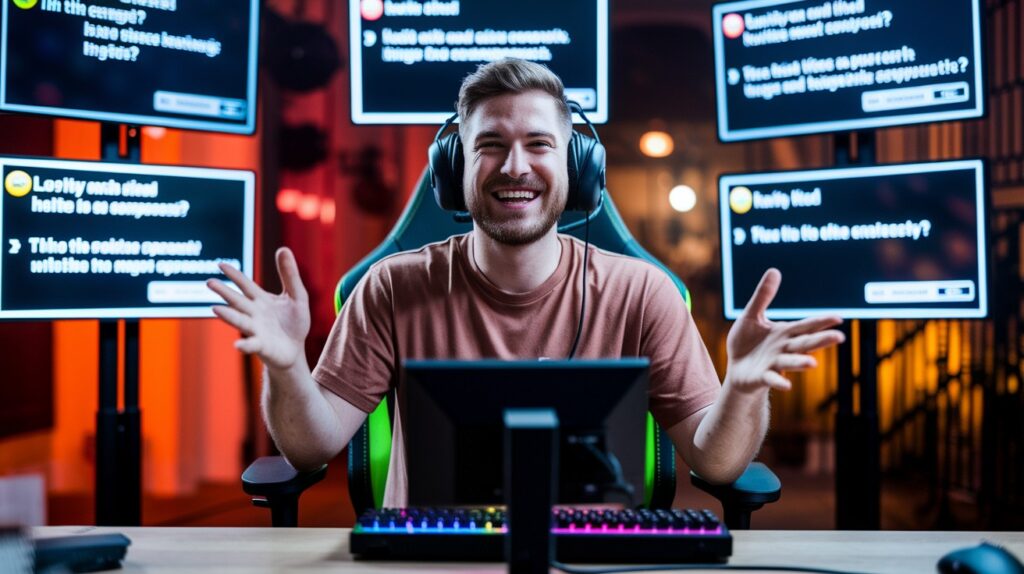
I used to watch standard Q&As where creators picked safe questions. You know the type-they avoid anything risky.
IGW threw out that rulebook.
When creators started taking unfiltered questions in real time, we saw who they really are. No managers selecting questions. No prepared answers.
That gaming influencer who answered questions for six straight hours changed the game. He responded to everything-even the tough stuff about past controversies.
The honesty was refreshing.
What makes these Q&As different?
- No dodging – Creators address questions they’d normally ignore
- Real answers – Responses that aren’t perfect but are truthful
- Surprising facts – Information that would never make it past a PR team
One beauty creator admitted which products she promoted but never actually used. She named names and explained why she took those deals when she started.
I found it fascinating when a travel influencer broke down his actual income sources. You could see how sponsored content made up just 40% of his earnings, with investments and side businesses making up the rest.
These sessions revealed the full picture.
A fitness creator addressed questions about steroid use in her industry. She spoke openly about the pressure she faced and what she knew about other creators.
Some fans ask tough questions. Others express thanks for the straight talk.
What makes these Q&As valuable is their contrast to standard media training. Instead of polished non-answers, you get messy truth.
The best IGW Q&As don’t just answer questions-they start conversations about topics the industry tries to hide.
And fans keep coming back for that honesty.
Creative Freedom Experiments
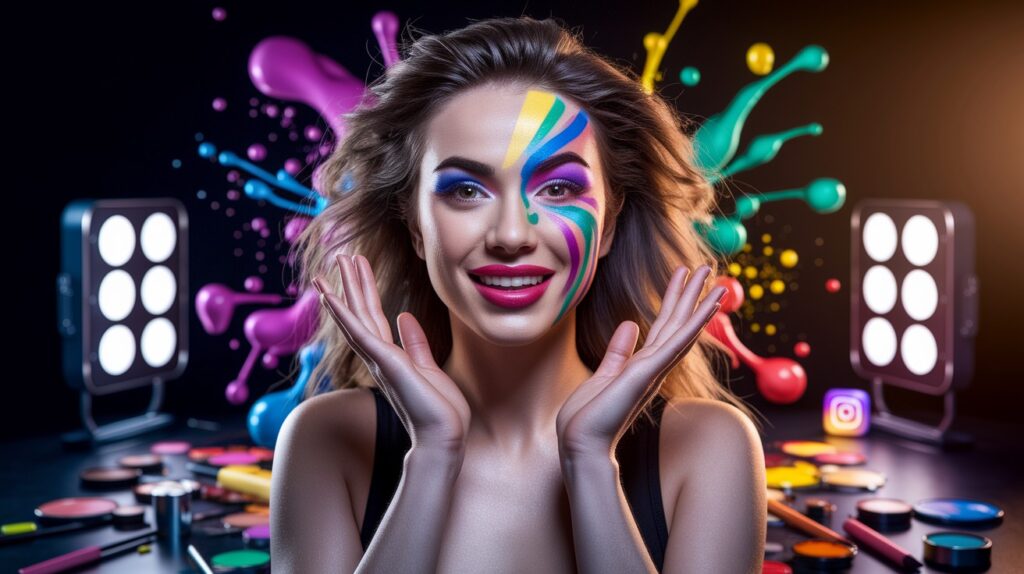
I’ve watched creators get stuck in content loops. You probably have too. The same videos, same poses, same lines-over and over.
IGW gave them room to try new things.
When creators break free from their usual format, something special happens. They come alive again.
That makeup artist who switched to abstract face painting stunned everyone. Her regular platform wanted only trending, wearable looks that would sell products.
On IGW, she created art.
The experiments took many forms:
- Skill crossovers – Fitness creators making music, chefs painting
- Format changes – Quick-cut creators making long, slow videos
- Style shifts – Luxury influencers trying budget challenges, minimalists going maximalist
One tech reviewer stopped doing reviews entirely. For a month, he built weird gadgets from scratch and documented his failures and rare successes.
I think these creative breaks matter because they fight burnout. You get to see creators rediscover their passion when they step outside their box.
The results surprised everyone.
A fashion creator known for perfect styling videos spent a week wearing only clothes picked by her followers. The awkward outfits and her honest reactions became her most-watched content ever.
Some experiments fail. Others lead to whole new content directions.
What makes these moments powerful is how they show the person beyond the brand. Real creators have diverse interests and skills that don’t fit neatly into algorithm categories.
The best IGW experiments aren’t just random-they reveal hidden parts of creators’ personalities that their main platforms never allowed space for.
That freedom to explore is what keeps creative people creative.
Private Space Glimpses
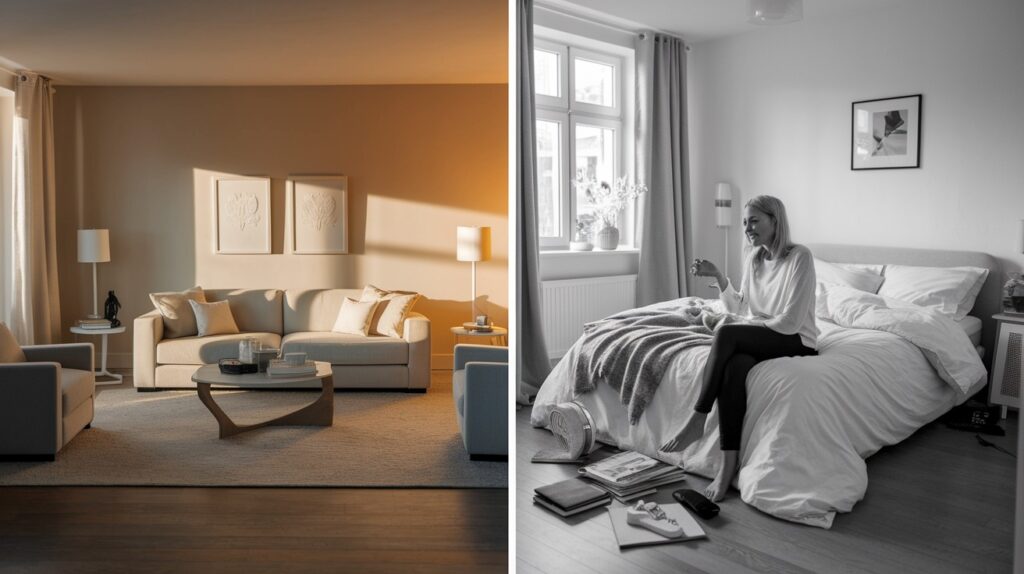
I used to think influencers lived in perfect homes. You might have thought so too.
Then IGW showed us the truth.
When creators let cameras into their real spaces-not the cleaned-up corners shown on Instagram-it changed how we see online life.
That home design influencer shocked everyone when she showed her actual bedroom. The rest of her apartment looked like her feed, but her private space was messy, with mismatched furniture and laundry piles.
It felt honest.
What these home tours revealed:
- Work areas – Cluttered desks, equipment storage, and planning walls
- Real living – Unwashed dishes, pet mess, and normal household chaos
- Personal touches – Family photos, childhood items, and meaningful objects
One beauty creator showed the tiny bathroom where she films all her videos. Using clever angles and lighting, she had made it look twice as large online.
I found it fascinating when a cooking influencer revealed his actual kitchen was half the size of what it seemed. You could see how careful camera work created an illusion of space.
These glimpses build trust.
A fashion creator who typically showed only minimalist spaces did a full tour of her maximalist, colorful home. She explained she had created a “content apartment” just for filming.
Some spaces looked nothing like what we expected. Others were mostly as shown, but with “messy corners” kept hidden.
What makes these private glimpses valuable is how they humanize people who often seem perfect. Seeing cereal boxes on counters and unmade beds reminds us that creators are regular people.
The contrast between curated spaces and real living areas shows just how much work goes into creating the illusion of perfection.
And that awareness helps us all feel better about our own imperfect spaces.
Collaborative Unfiltered Content
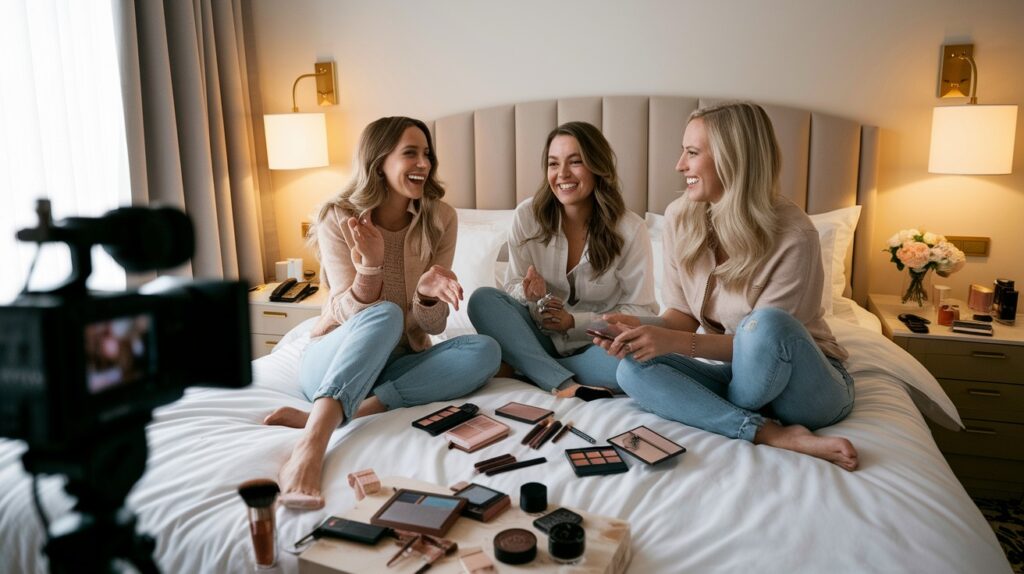
I love watching what happens when creators meet up without plans. You can feel the difference when they drop their brands and just hang out.
The masks come off quickly.
When influencers who normally compete start talking honestly, we learn how the industry works.
Those three beauty creators who streamed their hotel room conversations after a major convention changed everything. They shared stories about the same brands that none would have told alone.
Safety in numbers made it possible.
What happens in these group sessions:
- Industry gossip – Who doesn’t pay on time, which brands are difficult
- Shared struggles – Mental health issues, family pressures, money stress
- Real friendships – Who likes each other versus public “collabs”
One famous group of fitness influencers went camping with just phone cameras. No lighting, no editors, no planned activities. Their conversations about body image were eye-opening.
I think these meetups matter because they show the community behind the competition. You get to see how creators support each other when no one’s looking.
The contrast with planned collabs is striking.
A group of gaming creators who were supposedly rivals streamed a six-hour card game. The honest conversations about platform issues and payment problems helped new creators understand the field.
Some groups show tension. Others reveal unexpected friendships.
What makes these collaborations powerful is how one person’s honesty encourages others to open up, too. The first confession leads to a second, then everyone starts sharing.
The best IGW group content feels like sitting with friends late at night, when the deep conversations happen.
That’s something staged videos can never capture-and why fans keep coming back to IGW.
Public Persona Contradictions
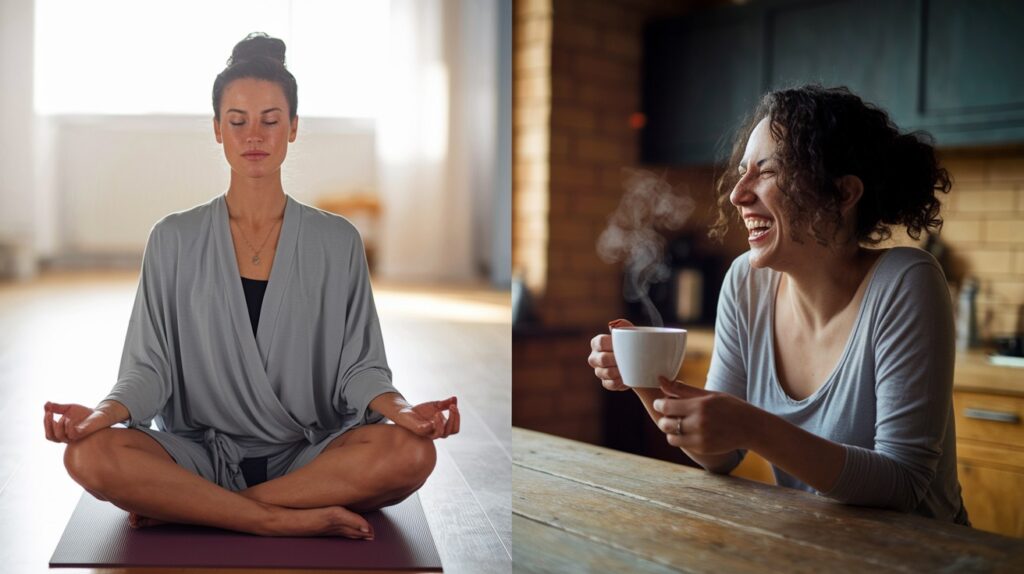
I used to believe the personalities I saw on social media were real. You might have, too.
IGW shattered that illusion.
When creators show who they truly are, the difference can be shocking. Some are completely different from their public image.
That calm, soft-spoken wellness guru surprised everyone when she cursed like a sailor and showed her sarcastic side on IGW. Her main platform was all gentle whispers and peaceful advice.
The contrast was jarring but refreshing.
Types of contradictions we’ve seen:
- Personality flips – Upbeat creators showing their quiet, thoughtful sides
- Knowledge gaps – Experts admitting what they don’t know
- Lifestyle differences – Luxury influencers showing their normal, budget-friendly choices
One fitness influencer known for strict diet rules showed his weekend eating habits. He ordered fast food and ate ice cream straight from the container.
I found it fascinating when a minimalist home creator revealed her storage unit packed with items she couldn’t part with. You could see she struggled with the very issues she helped others solve.
These moments feel like the truth.
A fashion creator known for bold, colorful outfits showed her actual wardrobe-mostly black basics and comfortable clothes. She explained she saves her energy for on-camera appearances.
Some fans feel tricked by these revelations. Others appreciate the honesty.
What makes these contradictions powerful is how they challenge our assumptions about online personas. They remind us that social media is often a performance.
The most meaningful contradictions aren’t scandalous-they’re simply human. Seeing that an always-positive creator sometimes feels sad or that a productivity guru has lazy days makes them more relatable.
And that connection is what IGW offers that polished profiles can’t.
Platform Boundary-Pushing
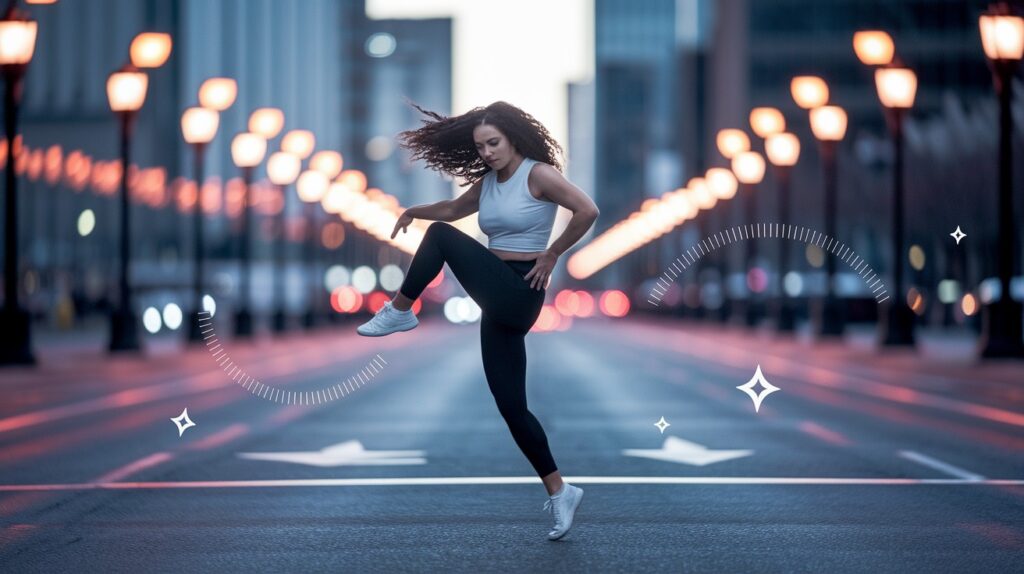
I’ve noticed how careful creators must be on main platforms. You have too. One wrong move and their accounts can be restricted.
IGW created a different space.
When creators test boundaries, they often find what audiences want, not what algorithms prefer.
That dance creator who showed her full routine without cuts or angle changes made people talk. Her main platform only allowed short, edited clips that hid the skill involved.
The complete version told a different story.
Creators pushed boundaries in various ways:
- Honest reviews – Calling out bad products from major brands
- Body freedom – Showing natural bodies without typical filters or censoring
- Creative expression – Art forms and topics considered too edgy for main platforms
One food creator showed the reality of recipe testing-including 12 failed attempts before the “perfect” version. He’d never show this process on his main account.
I think these tests matter because they reveal what social media rules truly protect. You can see which limits serve users and which serve advertisers.
The response tells a story.
A fitness influencer demonstrated exercises without selling anything or making unrealistic promises. She explained time frames and genetic factors that the main platforms discourage discussing.
Some boundary-pushing content gets removed. Other pieces start important conversations.
What makes these moments valuable is how they highlight the invisible rules of social media. When creators step just over the line, we suddenly see where the line was all along.
The most effective boundary-pushers don’t aim to shock-they aim to show what’s been unnecessarily hidden.
This kind of testing helps platforms evolve and audiences become more aware of the filters they’re viewing life through.
And that awareness changes social media for everyone.
Authentic Transformation Documentation
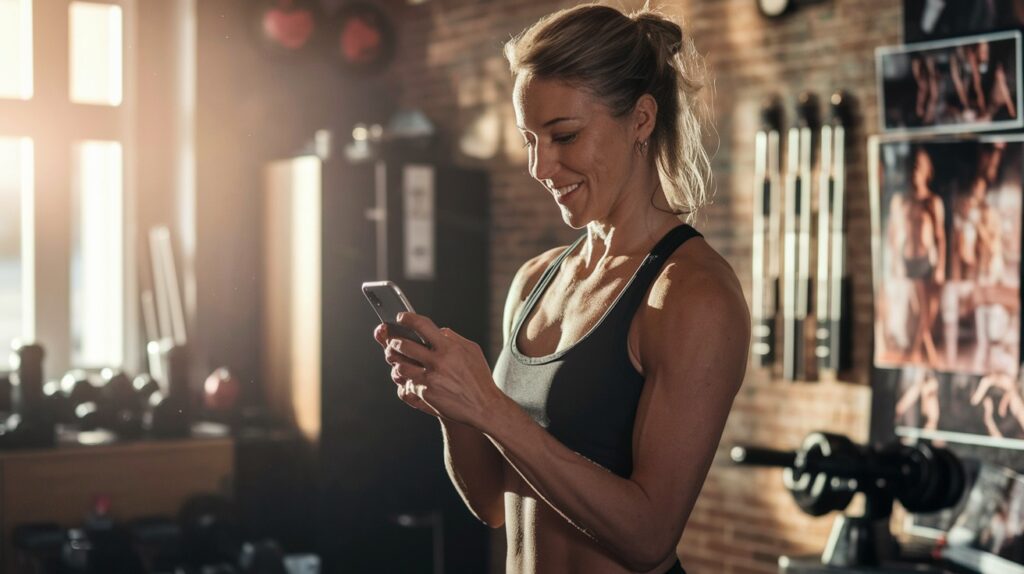
I used to be skeptical of transformation content. You probably were, too.
IGW showed us what real change looks like.
When creators document changes over weeks and months without filters, we see the real story. The ups and downs. The setbacks and breakthroughs.
That fitness creator who filmed daily updates for a year changed how we view body transformations. No special lighting. No poses. Just consistent check-ins-even on bad days.
The honesty was powerful.
Real transformations included:
- Skill building – Learning new abilities with all the frustrations shown
- Physical changes – Bodies changing at realistic paces with normal fluctuations
- Life transitions – Moving homes, changing careers, ending relationships
One art creator documented learning to paint from scratch. She showed every bad attempt and didn’t skip ahead to good results like main platform videos do.
I think these journeys matter because they show the work behind achievements. You get to see that success isn’t magic-it’s a series of small steps with many failures.
The timeline is important.
A cooking creator showed his path from basic meals to complex techniques over eight months. He included every burned dish and kitchen mistake instead of just the wins.
Some transformations are slower than expected. Others reveal surprising challenges.
What makes these documents valuable is their complete story. When we see someone struggle, doubt themselves, take breaks, and still make progress, it feels possible for us too.
The most honest transformation content doesn’t promise quick results. It shows the real time and effort required for meaningful change.
That’s something glossy before-and-after posts can never provide.
And it’s why IGW transformation content helps viewers set realistic expectations for their own goals.
Ethical Considerations Around These Notable Moments
I think we need to talk about the complicated side of IGW. You deserve the full picture.
Being real doesn’t mean sharing everything.
When creators open their lives, questions arise about what should remain private. The line between authentic and too much isn’t always clear.
Key ethical issues include:
- Consent boundaries – Ensuring everyone shown has agreed to be included
- Emotional health – Sharing trauma without proper support systems
- Security risks – Personal information visible in casual streams
One creator showed her address accidentally during a home tour. She had to move after fans showed up at her door.
I believe creators must think about impact, not just openness. The best IGW content feels honest without being reckless.
Protection matters too.
Content security is a real concern. Several creators have had private IGW content leaked to public platforms.
What makes ethical IGW content work is clear boundaries. Respected creators explain what they will and won’t share and stick to those limits.
Because authenticity without responsibility isn’t progress’s just a different kind of performance.
FAQs
What exactly makes content qualify as “InfluencersGoneWild”?
Content showing influencers being unfiltered, spontaneous, and breaking from their mainstream image, often more provocative or candid than their regular posts.
Why do influencers join IGW platforms despite potential reputation risks?
Financial independence, creative freedom, direct fan monetization, and relief from algorithm pressures make IGW attractive despite potential mainstream backlash.
How do subscribers benefit from IGW content versus free social media?
Subscribers gain exclusive access, authentic connections, personalized interactions, and unfiltered content not available on mainstream, advertiser-friendly platforms.
Can influencers maintain both mainstream and IGW presence successfully?
Yes, many creators maintain dual presences by establishing clear content boundaries and keeping their IGW material complementary to their main brand.
What safety measures should viewers consider when consuming IGW content?
Verify platform security, understand privacy policies, avoid sharing access, be cautious about content claims, and maintain critical thinking about authenticity.








